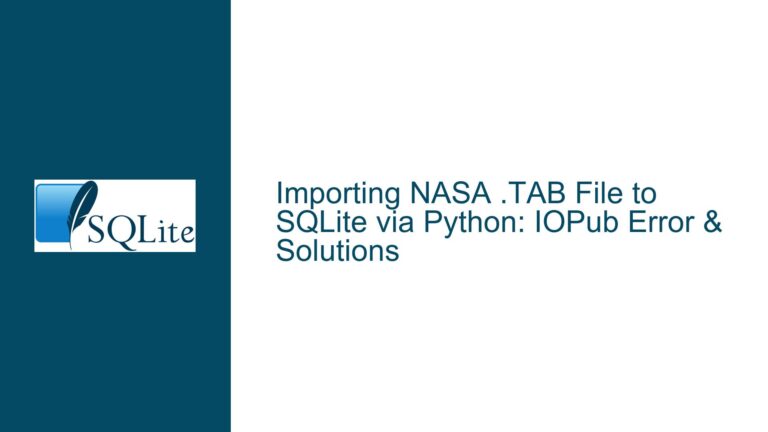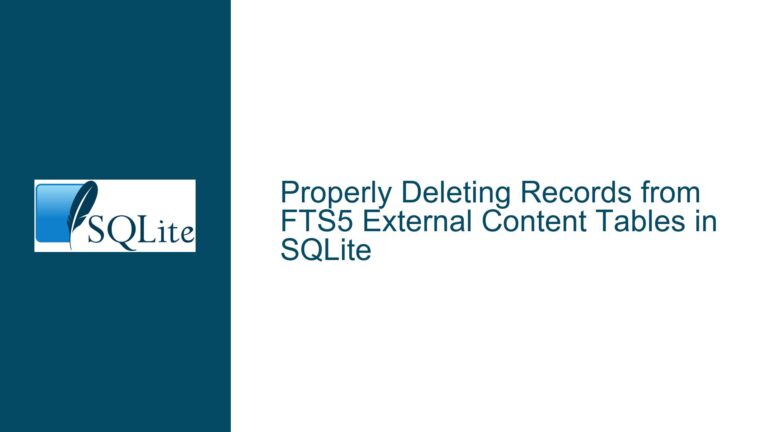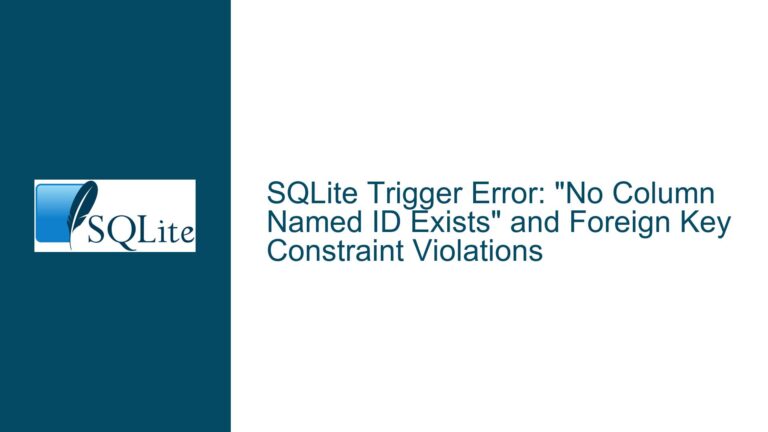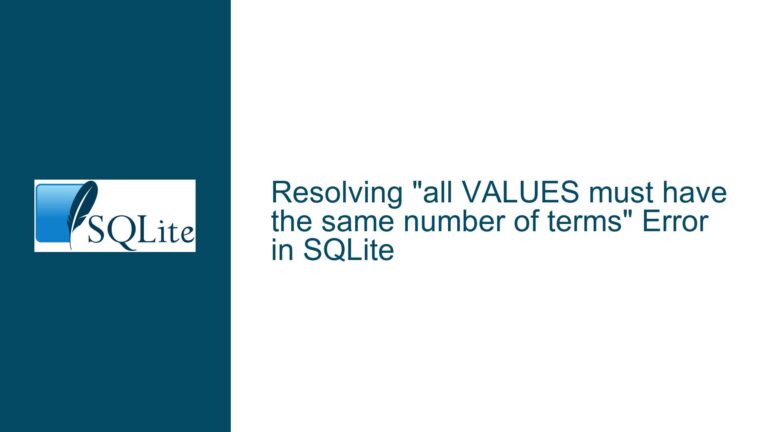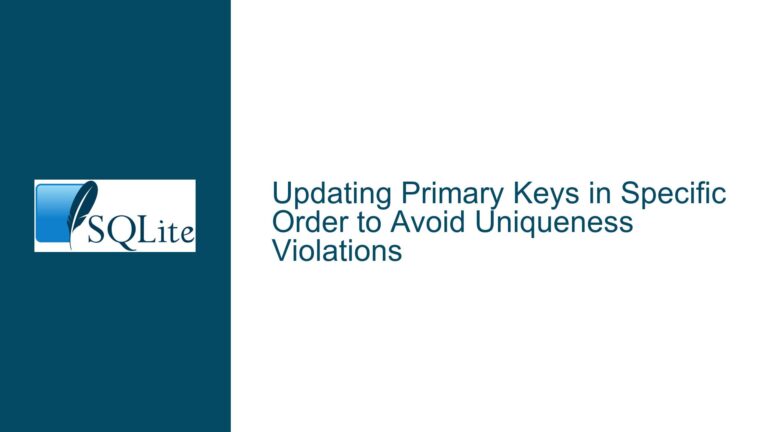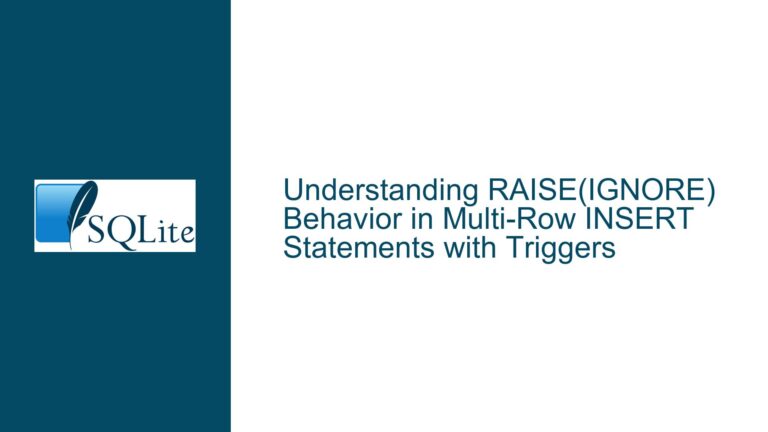Handling OutOfMemoryException When Storing JPEG Images in SQLite on Android
Understanding OutOfMemoryException During JPEG Image Storage in SQLite
When working with SQLite on Android, one of the most common challenges developers face is efficiently storing large binary data, such as JPEG images, without running into memory-related issues. The OutOfMemoryException is a critical error that occurs when the application attempts to allocate more memory than the system can provide. This issue is particularly prevalent when dealing with high-resolution images captured by modern smartphone cameras, which can easily exceed several megabytes in size. The problem is compounded when these images are read into memory, processed, and then stored in an SQLite database.
The core of the issue lies in the way Android handles memory allocation for bitmaps and how SQLite manages binary data storage. JPEG images, when loaded into memory as bitmaps, can consume a significant amount of RAM. For example, a 12-megapixel image can require over 48 MB of memory when decoded into a bitmap, depending on the color depth and compression. If the application attempts to load multiple such images simultaneously, the available memory can quickly be exhausted, leading to an OutOfMemoryException.
Additionally, SQLite is not inherently designed to handle large binary objects (BLOBs) efficiently. While SQLite can store BLOBs, the database engine must load the entire BLOB into memory during certain operations, such as inserts or updates. This behavior can exacerbate memory usage, especially when dealing with large images. Therefore, the challenge is twofold: reducing the memory footprint of the images before they are stored in SQLite and ensuring that the database operations do not overwhelm the available memory.
Potential Causes of OutOfMemoryException in Image Storage Workflows
Several factors can contribute to the OutOfMemoryException when storing JPEG images in SQLite on Android. Understanding these causes is essential for implementing effective solutions.
First, the resolution and quality of the captured images play a significant role. Modern smartphone cameras can capture images with resolutions exceeding 4000×3000 pixels, resulting in file sizes of several megabytes. When these images are decoded into bitmaps for processing or display, they can consume a substantial amount of memory. If the application does not manage this memory usage carefully, it can quickly lead to an OutOfMemoryException.
Second, the way images are loaded into memory can also contribute to the problem. Android provides several methods for loading bitmaps, such as BitmapFactory.decodeStream() and BitmapFactory.decodeFile(). These methods load the entire image into memory at its full resolution, which can be inefficient for large images. If the application does not scale down the images before loading them, the memory usage can become unsustainable.
Third, the SQLite database operations themselves can be a source of memory pressure. When inserting or updating a BLOB in SQLite, the entire BLOB must be loaded into memory. If the BLOB is large, such as a high-resolution JPEG image, this operation can consume a significant amount of memory. Additionally, if multiple large BLOBs are inserted or updated in quick succession, the cumulative memory usage can lead to an OutOfMemoryException.
Finally, the Android application’s memory management practices can also contribute to the issue. If the application does not release unused resources promptly or if it retains references to large objects unnecessarily, the available memory can be exhausted more quickly. This is particularly problematic in long-running applications or those that handle multiple large images.
Strategies for Mitigating OutOfMemoryException in SQLite Image Storage
To address the OutOfMemoryException when storing JPEG images in SQLite on Android, developers can employ a combination of image compression, memory-efficient loading techniques, and optimized database operations. Below, we explore these strategies in detail.
Image Compression Techniques
One of the most effective ways to reduce memory usage is to compress the JPEG images before storing them in SQLite. Compression reduces the file size of the images, which in turn reduces the amount of memory required to load and process them. There are several approaches to image compression, each with its trade-offs.
Lossless compression preserves the original image quality but typically achieves lower compression ratios. This method is suitable for applications where image fidelity is critical. However, for most use cases, lossy compression is more practical. Lossy compression reduces the file size more significantly by discarding some image data, but the quality degradation is often imperceptible to the human eye.
Android provides built-in support for JPEG compression through the Bitmap.compress() method. This method allows developers to specify the compression quality as a percentage, with 100% representing the highest quality and lowest compression. By adjusting this parameter, developers can strike a balance between image quality and file size. For example, setting the compression quality to 70% can reduce the file size by 50% or more with minimal impact on visual quality.
In addition to built-in compression, third-party libraries such as Compressor and Luban offer advanced compression algorithms that can achieve higher compression ratios while maintaining acceptable image quality. These libraries often include features such as automatic resolution scaling and adaptive compression, which can further reduce memory usage.
Memory-Efficient Image Loading
Another critical strategy is to load images into memory in a way that minimizes memory usage. Android provides several mechanisms for loading bitmaps efficiently, such as BitmapFactory.Options. By setting the inSampleSize property, developers can load a scaled-down version of the image, reducing the memory footprint. For example, if the original image is 4000×3000 pixels and inSampleSize is set to 4, the loaded bitmap will be 1000×750 pixels, requiring significantly less memory.
The inJustDecodeBounds property of BitmapFactory.Options can be used to determine the dimensions of the image without loading it into memory. This information can then be used to calculate an appropriate inSampleSize value. For instance, if the target display size is 500×500 pixels, the inSampleSize can be calculated to load an image that is just large enough to fill the display without wasting memory.
Another approach is to use the BitmapRegionDecoder class, which allows developers to load only a portion of the image into memory. This is particularly useful for applications that display large images in a zoomable view, as it enables loading only the visible portion of the image at any given time.
Optimized SQLite Database Operations
To minimize memory usage during SQLite database operations, developers can adopt several best practices. First, consider storing images as files on the device’s storage and saving only the file paths in the SQLite database. This approach avoids loading large BLOBs into memory during database operations, reducing memory pressure. However, it requires careful management of file storage and may not be suitable for all use cases.
If storing images directly in SQLite is necessary, consider using transactions to batch multiple insert or update operations. Transactions reduce the overhead of individual database operations and can help manage memory usage more effectively. Additionally, ensure that the database connection is closed promptly after use to release any associated resources.
Another optimization is to use prepared statements for inserting or updating BLOBs. Prepared statements reduce the overhead of parsing and compiling SQL statements, which can improve performance and reduce memory usage. Furthermore, consider using the SQLiteStatement class for binding BLOBs, as it provides more control over memory management.
Memory Management Best Practices
Finally, adopt memory management best practices to prevent memory leaks and excessive memory usage. Use weak references or soft references for caching images, allowing the garbage collector to reclaim memory when needed. Avoid retaining references to large objects unnecessarily, and release resources such as database connections and cursors promptly.
Monitor the application’s memory usage using tools such as Android Profiler, which can help identify memory leaks and excessive memory usage. Use the onTrimMemory() callback to release resources when the system is under memory pressure, ensuring that the application remains responsive and stable.
By combining these strategies, developers can effectively mitigate the OutOfMemoryException when storing JPEG images in SQLite on Android. The key is to balance image quality, memory usage, and database performance, ensuring that the application remains efficient and reliable even when handling large amounts of image data.

